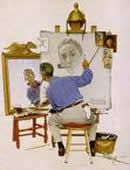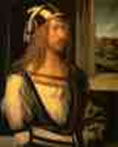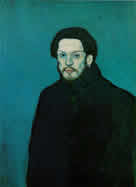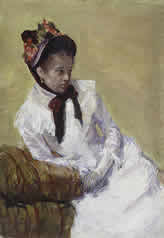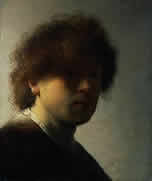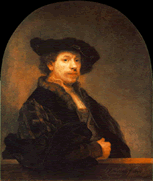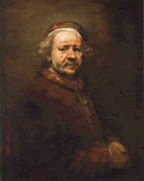Self portraits:
Working with a low-cost model
Throughout history, artists have painted self portraits. We can only guess the reasons:
- to record an image for posterity
- vanity
- practice
- to document changes in appearance
Whatever the reason, you can guarantee that painting yourself provides the most economical model available--and you can always be sure the model is on time and can last just as long as you can.
Rembrandt van Rijn painted self portraits throughout his life. Without them, we'd not have such a good idea of his appearance. In these three portraits, we see the artist as a young man of 22 in 1628, then in 1640, and finally in 1669, shortly before he died.
If you want to know more about Rembrandt van Rijn, try Rembrandt: 1606-1669, a book by Michael Bockemuhl. Click on the image below.
Why should you paint self portraits?
The human figure and face are classic subjects for artists, and they are among the most challenging. For a subject that is so familiar and so ubiquitous, some artists avoid people in their art.
To learn to paint humans, you must paint humans, and the best and cheapest model is the person in the mirror.
An exercise in subjectivity
Try this: Paint your face from memory. Don't look in a mirror and don't use a photograph. Set it aside and try it again with a mirror image or with a photograph.
Sit with an artist friend and paint each other's portraits. Compare your friend's work with your own versions. Note the differences.
Advance to a full figure of yourself. Don't try to flatter yourself; just try to be accurate.
Why?
Because it will make you a better
artist. The human figure and
face are familiar to all of us,
yet most of us never master the
subject. Even worse, many will
never make the attempt.
All rights reserved

